The textile sector in Pakistan holds a highly significant position as for the past few decades this has been our only backbone of the industry. It accounts for more than 60% of our export earnings – which, needless to mention, aren’t a lot already (there are other issues with our total export figure as well as for every $1 we export, there is a $0.30 – $0.40 of the imported item, but that is for another article). Given the recent global economic turmoil as a result of Covid-19 and the subsequent unprecedented increase in money supply at extremely low-interest rates followed by what has come to be known as one of the longest and most aggressive global monetary policy tightenings, Pakistan’s economic conditions turned murky as interest rates have increased more than 77% in one year and the rupee has devalued more than 50%. In this article, I will briefly export its effect on textile sectors.
The All Pakistan Textile Mills Association (APTMA) has reported that the textile industry’s exports have been severely impacted by the unavailability of cotton (about which we shall speak below) and restrictions on opening LCs for imports, leading to significant unemployment in the sector. According to one estimate about 7 million people have been unemployed in the textile sector alone – that means 7 million families.
Recently the fear of a default by textiles is looming in the industry. Most of the textile mills run at less than 50% of their production capacity. A letter from APTMA warned that if the economic conditions do not improve, more than 10 million people might lose their job along with $10 billion in export revenue.
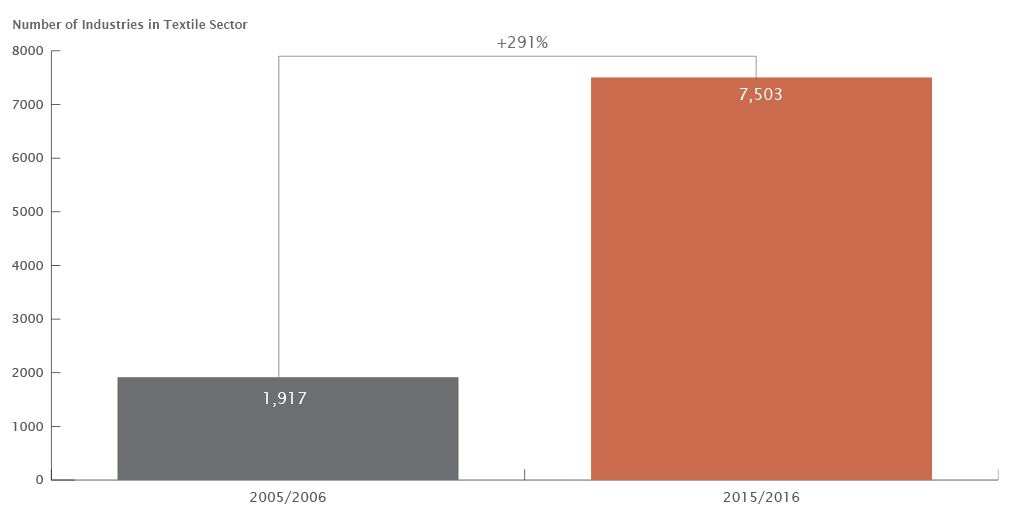
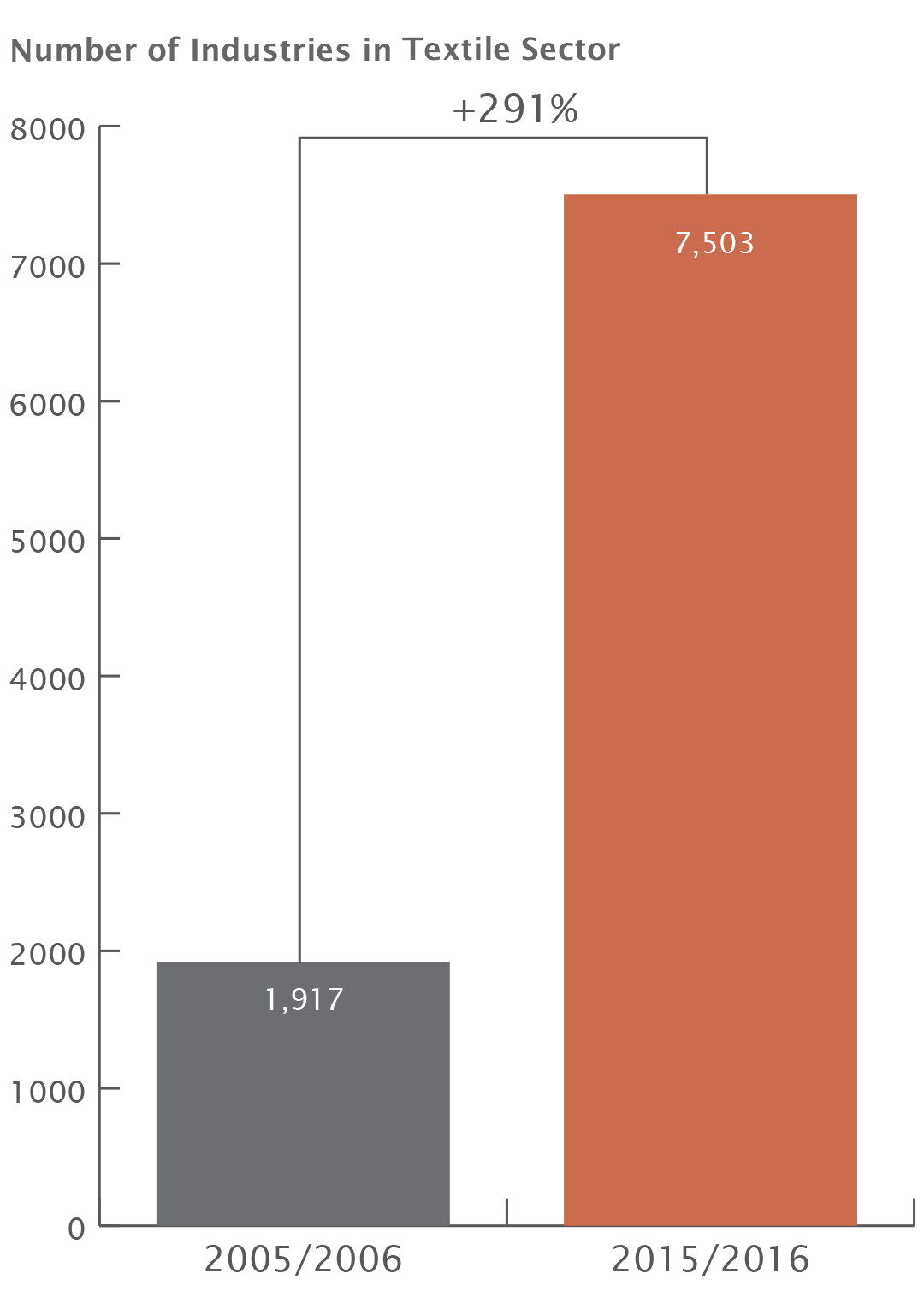
The issue also extends to raw materials as well. The catastrophic floods last year cost the economy $30 billion. Along with that cotton production has been affected and was registered at 5 million bales forcing the industry to import 1 million bales. This became a serious issue when the government imposed import restrictions forcing many mills to reduce production further. Estimates for cotton production are not promising as well. About 4.78 million bales are expected – less than half of the target of 9 million bales.

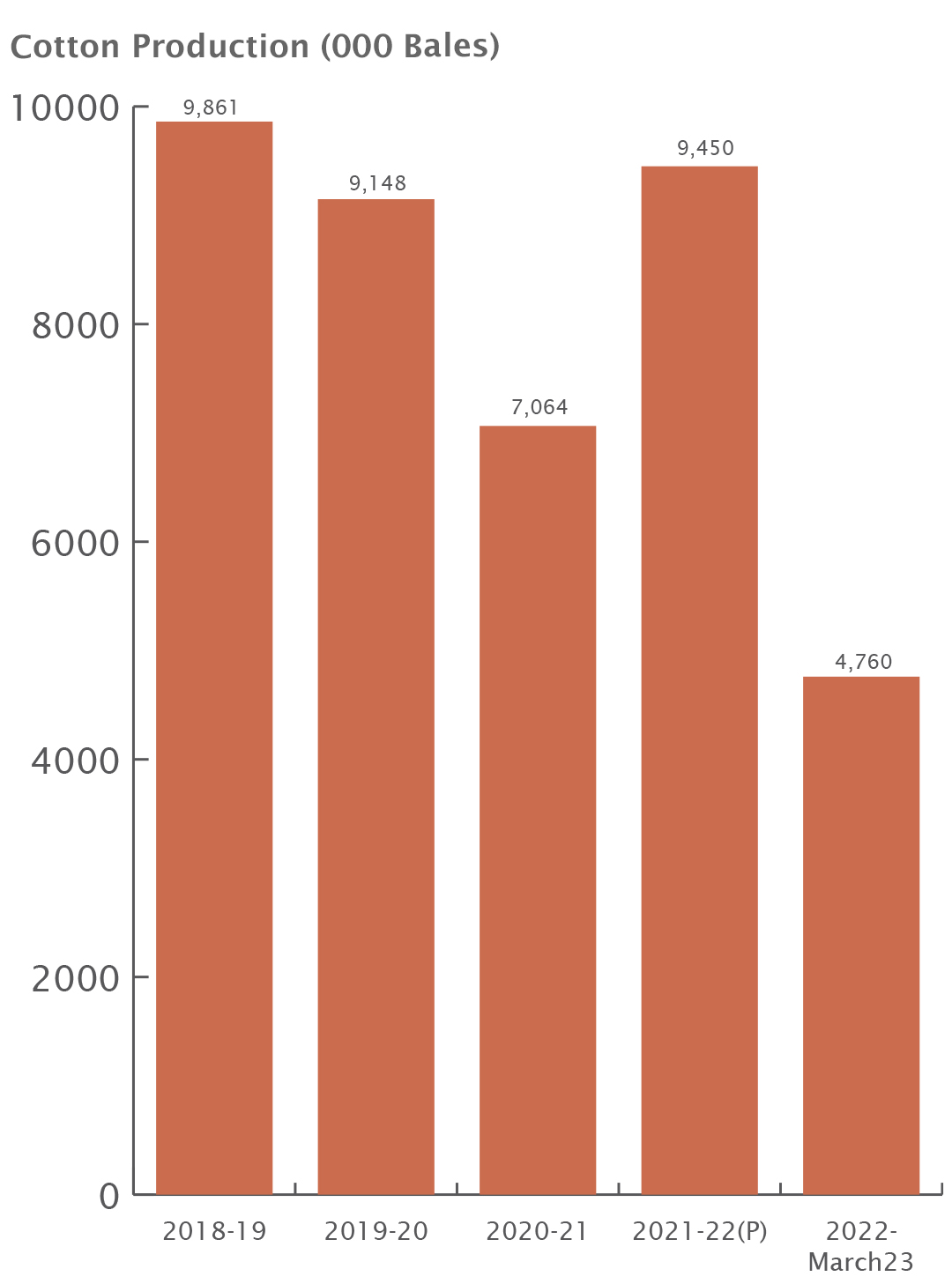


Source: Foreign Agriculture Services/USDA, WWF, The World Counts
Research shows that Pakistan’s cotton production potential as the 5th largest cotton producer can be scaled up to 15 million bales if an enabling environment is created. Falling cotton production has an adverse impact on our reserves as well as the bill has surpassed PKR 56 billion.

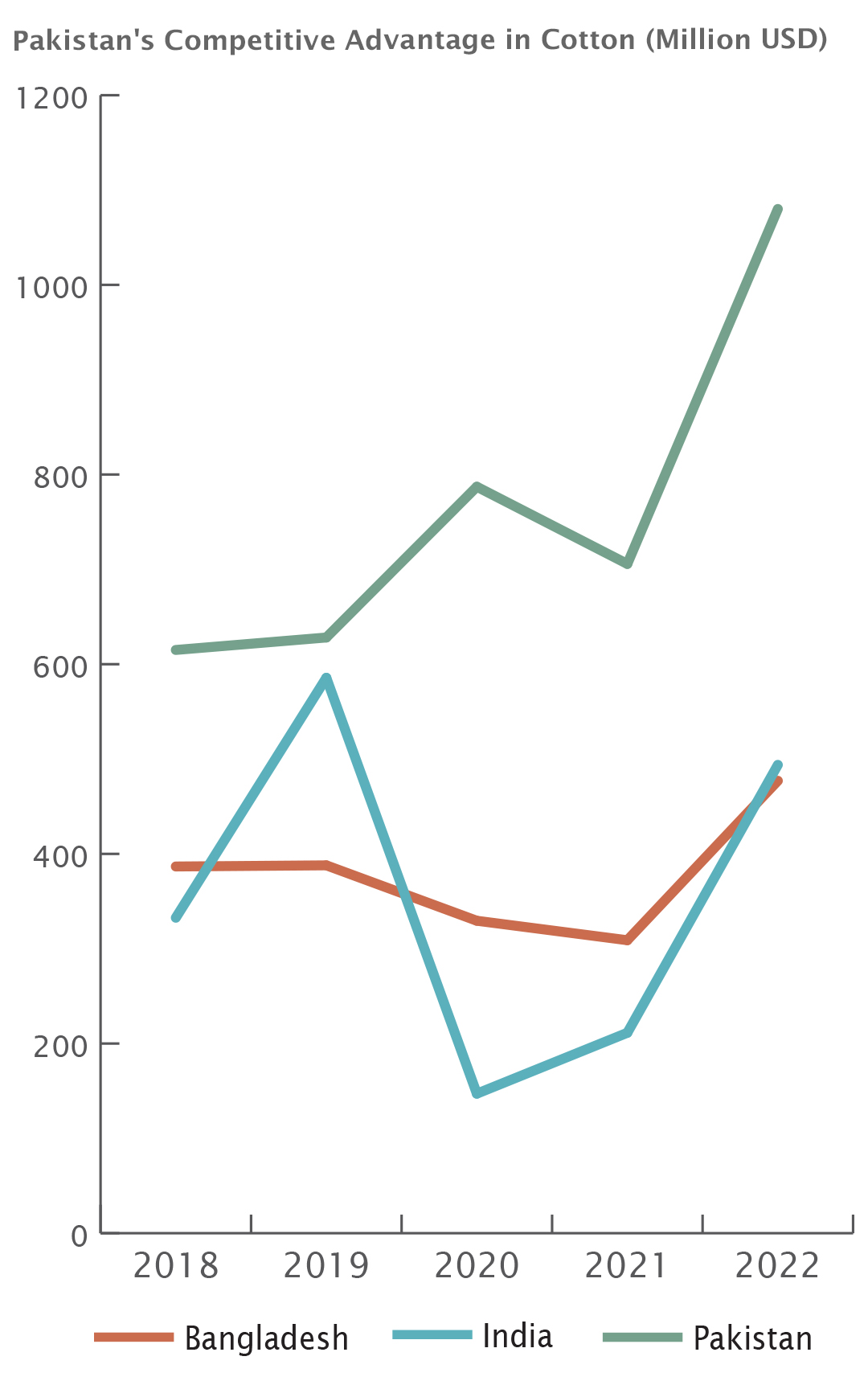
The root of these issues lies in the structural issues of our economy that no one seems to talk about or be interested in. Therefore, the following discussion will focus on the bigger picture.
There are many issues with our economy but sadly what most TV programs or articles focus on is the manifestation of those issues, the symptoms so to speak. High inflation, rising food prices, government deficits, IMF, rising debt, and the one that is the focus of this article, the textile sector, all of those are symptoms of underlying structural issues. What are these? It warrants a dedicated article. However, I will mention a few. For instance, falling agricultural yield corresponds to an extremely important issue of rising food prices and given Pakistan’s vulnerability to this aspect and our tenuous situation of food security, this should be our topmost priority issue. The low tax-to-GDP ratio is another one that feeds into our perpetual domestic debt and provides momentum to our unending love with IMF. Short-termism in policy-making, popular measures that go against our fundamental economic realities (such as giving subsidies), and under-investment in education, research, and innovation are a few others.
Let’s conclude the article by asking a series of very relevant and timely questions:
Why hasn’t Pakistan built another backbone industry other than ‘textile’?
Why don’t we diversify?
Why don’t we include proactive policymaking in our planning?
What are our hedges against the imminent fall in cotton production and the probability of importing millions of bales as the specter of default lurks right in front of us?
The answer isn’t an encouraging one.
Interest rates are expected to rise further as IMF, paying homage to the Washington Consensus, has asked for a 3% hike. That will bring the overall industry of Pakistan to a screeching halt while breaking many in the process. The issues and unfortunate developments in the textile sector are just a microcosm, an exact reflection of our wider economic macrocosm.
I will try to chart out the latest developments in our economy through my articles here.




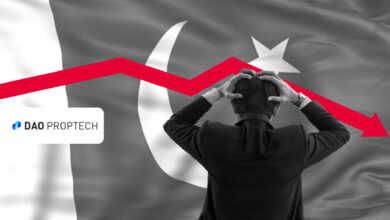
Good work …. Keep producing these wonderful pieces of information…,